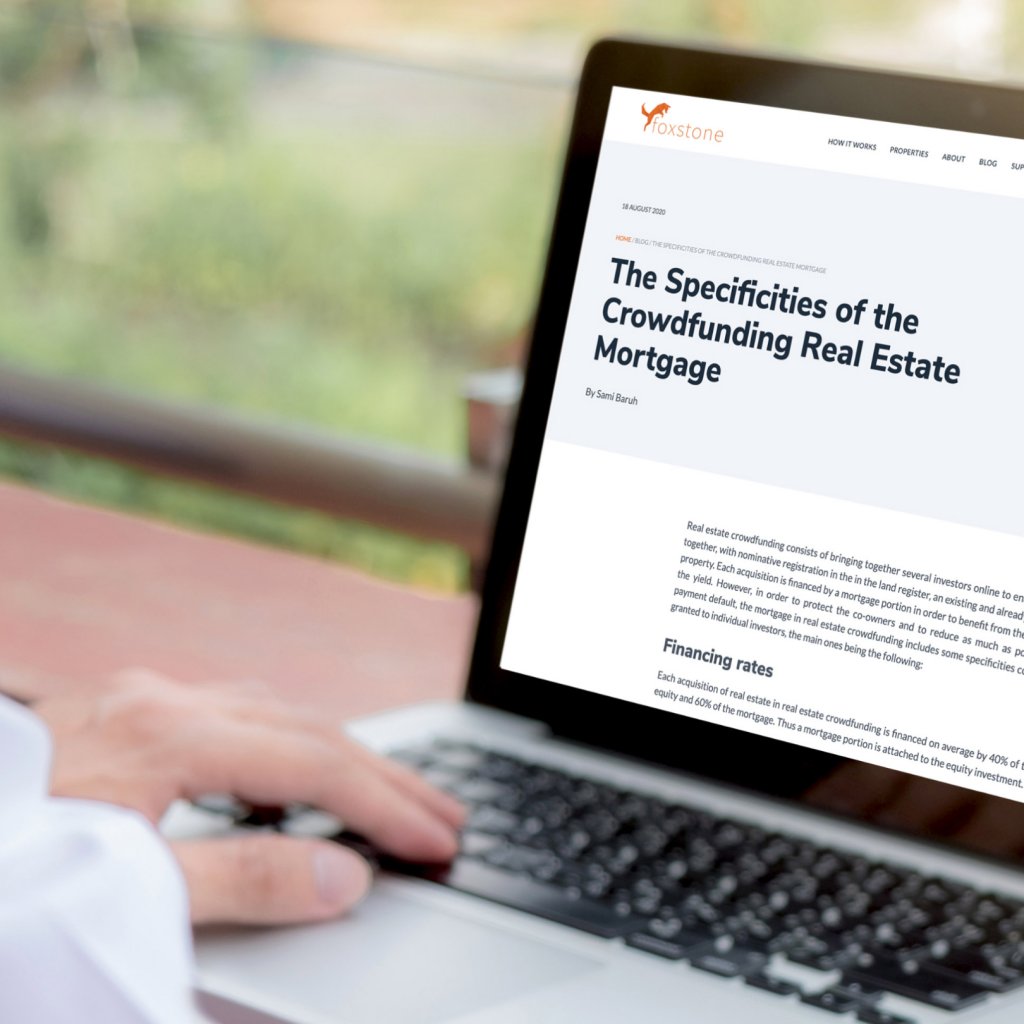The Specificities of the Crowdfunding Real Estate Mortgage

Real estate crowdfunding consists of bringing together several investors online to enable them to acquire together, with nominative registration in the land register, an existing and already rented investment property. Each acquisition is financed by a mortgage portion in order to benefit from the leverage effect on the yield. However, in order to protect the co-owners and to reduce as much as possible any risk of payment default, the mortgage in real estate crowdfunding includes some specificities compared to those granted to individual investors, the main ones being the following:
Financing rates
Each acquisition of real estate in real estate crowdfunding is financed on average by 40% of the investors’ equity and 60% of the mortgage. Thus a mortgage portion is attached to the equity investment.
The mortgage is known as a “first-rank” mortgage, i.e. the debt ratio never exceeds 66.6% of the value of the property, whereas in Switzerland the debt ratio on residential properties can be as high as 80%. Lowering the debt ratio reduces the risk of defaulting on interest payments because the project is self-supporting: the property is self-financing with large safety margins, with rental income covering an average of five to six times the mortgage interest.
Term and amortization
The mortgage interest rate is set over a period of seven to ten years in order to protect investors from the negative effects of a rate increase, which could deteriorate the income from the investment, and to have good long-term visibility. At the end of the mortgage, the co-owners vote by a qualified majority (two-thirds of the votes) to negotiate a new mortgage or the sale of the building.
Since the mortgage is a first-rank mortgage, the bank does not ask for amortization. The goal for the investor is not to repay a mortgage but rather to generate a stable return throughout the term of the mortgage.
Uncoupled mortgage
The mortgage is unconsolidated, i.e. the co-owners are not joint and several co-debtors. Each co-owner is liable only for the mortgage in proportion to the amount invested. It would be unthinkable for each co-owner to be jointly and severally liable for the entire amount of the mortgage when he does not even know the other co-owners.
The co-ownership is thus protected in the event of the insolvency of one of its members. Should the latter occur, the co-ownership administration by-laws provide for a right of emption registered in the land register allowing Foxstone to redeem the shares of the insolvent co-owner in order to offer them for acquisition to the other co-owners.
These three specific mortgage features implemented by Foxstone make it possible to ensure the smooth operation and durability of the co-ownership and to maintain stable returns with a low level of risk and mortgage indebtedness.



